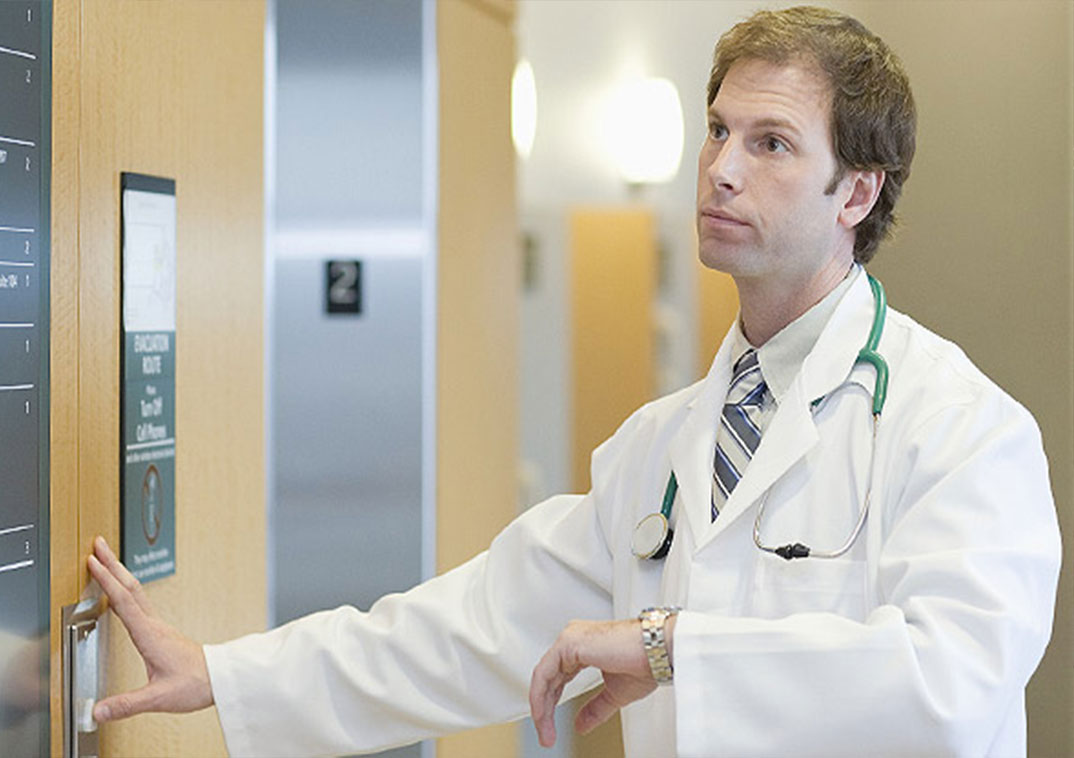Hospital Bed Elevators typically have shock resistance and buffering functions, which are important design features for ensuring patient safety, improving operational stability, and extending equipment lifespan in medical environments.
1、 What are "shock resistance" and "buffering function"?
The anti impact function refers to the ability of the lifting system to effectively absorb impact energy through structural design or material selection when subjected to external impacts or sudden forces, preventing equipment deformation or damage.
The buffering function refers to the ability of the system to achieve a smooth transition during the lifting process, especially during the start and stop phases, avoiding the bumpy feeling caused by sudden starts and stops, thereby protecting the safety and comfort of patients and medical staff.
2、 Why do Hospital Bed Elevators need these features?
Patient safety first
Medical lifting equipment is commonly used for patients with mobility difficulties, postoperative recovery, or severe illness. Any sudden vibration or shock may cause discomfort or even injury to the patient. Therefore, the buffering function can ensure a smooth lifting process and reduce body shaking.
Enhance user experience
For nursing staff, smooth lifting operations can reduce the difficulty of handling and improve work efficiency; At the same time, it can also enhance patients' trust and comfort in the equipment.
Extend equipment lifespan
Buffer mechanism can reduce direct impact between mechanical components, reduce wear and fatigue damage, and help extend the service life of equipment.
Adapt to complex medical environments
Hospitals often require moving hospital beds or emergency lifting operations, and shock resistant designs can effectively cope with the impact of unexpected collisions or uneven ground vibrations.
3、 How to achieve anti impact and buffering functions?
Structural design optimization
Use high-strength metal frames (such as aluminum alloy, stainless steel) to enhance overall rigidity;
Install elastic supports or shock-absorbing pads at critical connection points to absorb some of the impact force.
Hydraulic or pneumatic system
Hydraulic cylinders or pneumatic devices have good damping effects, which can control the lifting speed and achieve soft landing;
Some high-end devices are also equipped with multi-stage buffer valves to further enhance operational stability.

electronic control system
Using frequency converters or servo control systems to achieve stepless speed regulation during the lifting process;
Set up soft start/stop programs to prevent device from experiencing sudden jumps or shaking during startup and shutdown.
Shock absorber materials and accessories
Install auxiliary components such as rubber pads and spring buffers between the bracket and the platform;
Apply shock-absorbing coating on the surface or use composite materials to reduce vibration transmission.
4、 Does it comply with relevant safety standards?
In order to ensure that the impact resistance and cushioning performance of Hospital Bed Elevators meet the safety requirements of medical equipment, such products typically require a series of international or national certifications and tests, such as:
ISO 13482: Safety standard for mechanical equipment
IEC 60601 series: Safety specifications for medical electrical equipment
CE certification (EU Medical Device Regulation MDR)
FDA Medical Device Registration (USA)
GB 9706/YY 0709 (China Medical Equipment Safety Standard)
These standards explicitly require that equipment must consider mechanical strength, impact protection, and operational stability during design and manufacturing.
Hospital Bed Elevators are equipped with shock resistance and buffering functions, which are not only to meet the basic safety needs of medical equipment, but also a key design element to improve nursing efficiency, ensure patient comfort, and extend equipment lifespan. When purchasing or developing such equipment, special attention should be paid to its power system, control logic, and structural strength, and ensure that it has passed the safety certification of authoritative institutions.











